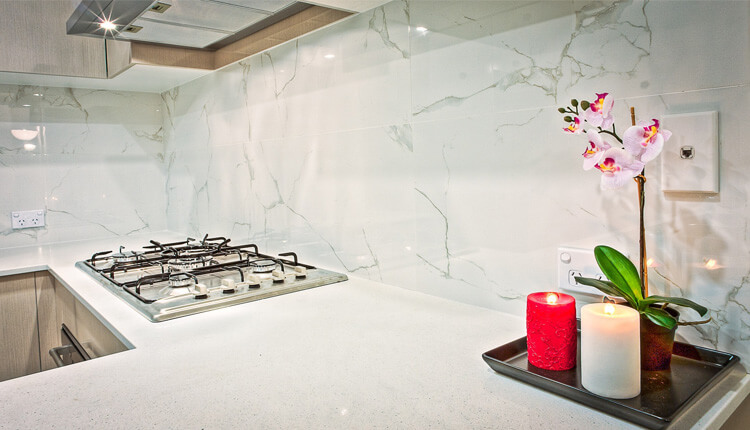Commercial kitchens are humming with culinary innovation, where accuracy and quality are essential. Keeping a clean, safe, and sanitary atmosphere is essential for the success of any food service operation, whether it’s a restaurant, cafeteria, or catering service.
Wall cladding is an often overlooked but critical component in this equation. We’ll go into the realm of wall cladding in this detailed guide, looking at its significance, materials, benefits, and installation.
Commercial Kitchen Wall Cladding’s Importance
Wall cladding has several applications in the food service business. It is fundamentally intended to safeguard both the kitchen infrastructure and the quality of the food produced. Let us examine the relevance of this critical component:
Food safety
It is a non-negotiable need in every kitchen. A kitchen’s walls are continuously exposed to steam, splatters, spills, and other hazardous contaminants. These circumstances can promote the growth of hazardous germs and moulds, jeopardising the safety of the food being cooked. This hazard is well countered by wall cladding.
Hygiene
In the food service sector, hygiene is a primary responsibility. Wall cladding, which is often constructed of stainless steel, PVC, or composite panels, produces a smooth and easily cleaned surface. These surfaces are impervious to water, stains, and bacterial development. This makes it much easier for kitchen employees to maintain strict hygiene standards and prepare meals in a clean and hygienic atmosphere.
Heat Resistance
Because of the presence of different cooking equipment such as burners, grills, ovens, and deep fryers, commercial kitchens are frequently hot and humid settings. The materials used for wall cladding are selected for their capacity to endure high temperatures, often up to 80 degrees Celsius (176 degrees Fahrenheit).
Durability: The kitchen may be a hard environment, and the walls are constantly subjected to wear and tear. The materials used for wall cladding are chosen for their durability and capacity to bear physical force. This ensures that the kitchen walls will remain in good shape in the long run, lowering maintenance expenditures.
Appearance: Aside from practicality, wall cladding may contribute to the space’s appearance. The sleek and clean appearance of stainless steel, as well as the wide range of colours and textures available with PVC cladding, may improve the overall ambiance of the kitchen. In open kitchen settings, a well-designed kitchen not only aids the employees but also creates a nice experience for clients.
Kitchen Wall Cladding Materials
The material used for kitchen wall cladding is critical because it impacts the efficiency and durability of the protective coverings. Companies like Apple Solutions offer a variety of a variety of materials that are often used:
Stainless Steel: Because of its remarkable durability, corrosion resistance, and simplicity of cleaning, stainless steel is a popular choice for kitchen wall cladding. It has a sleek, professional appearance and is ideal for high-heat conditions. Furthermore, stainless steel can endure chemical cleansers without deterioration, making it an excellent choice for hygiene.
PVC (Polyvinyl Chloride): PVC wall cladding is popular due to its flexibility, low cost, and simplicity of installation. It is moisture resistant and comes in a variety of colour and texture possibilities, allowing for creative design alternatives. PVC cladding may be a low-cost alternative for kitchens without sacrificing cleanliness or aesthetics.
Composite Panels: Composite panels blend several materials to provide a wall cladding solution that is both durable and aesthetically pleasing. These panels are frequently made out of a core material (such as foam) placed between layers of more durable materials (such as aluminium or PVC). Insulation, impact resistance, and a variety of design possibilities are all provided by composite panels.
FRP wall cladding: It is noted for its resilience to moisture, chemicals, and corrosion. It is lightweight, long-lasting, and simple to clean. Because they are non-porous and resistant to bacterial development, FRP panels are a popular choice in kitchens where hygiene is a key issue.
The Advantages of Kitchen Wall Cladding
Installing kitchen wall cladding has a number of advantages:
Improved Food Safety: Wall cladding reduces the possibility of contamination and bacterial development, ensuring that food made in the kitchen is safe to eat.
Improved Hygiene: Surfaces that are easily cleaned minimise the work necessary to maintain hygiene standards, contributing to a cleaner and healthier kitchen environment.
Heat Resistance: Heat-resistant wall cladding materials are appropriate for kitchens with high-temperature cooking equipment.
